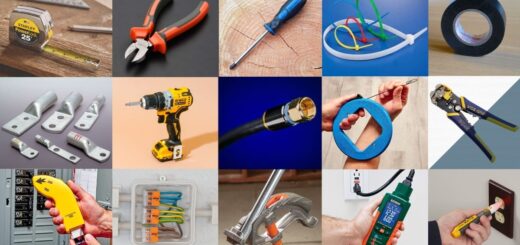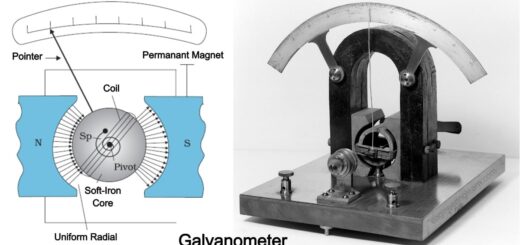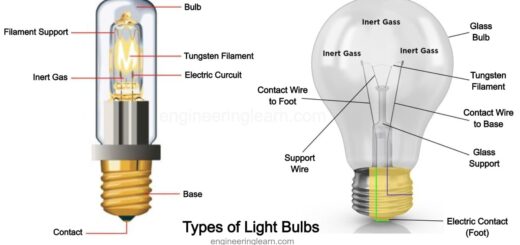What is Inductor? Types of Inductor, Uses, Function & Symbol [Complete Details]
![What is Inductor? Types of Inductor, Uses, Function & Symbol [Complete Details]](https://engineeringlearn.com/wp-content/uploads/2021/12/Inductor-1024x539.jpg)
What is an Inductor?
What is Inductor? Types of Inductor, Uses, Function & Symbol [Complete Details] :- An inductor is a coil which stores energy in it in the form of magnetic field. It consists of a wire or loop or coil. The inductor opposes the change in flow of current in a circuit. The ability of the coil which opposes the change in flow of current is a property of that coil, called inductance.
The inductance depends upon the number of turns of coil or loop and radius of that coil or loops and depends also on the material around which the coil is wound. Due to this inductance a induced voltage is produced when the current which is flowing from it varies. So we can say that the inductance is the ability to produce the induced voltage due to variation in flowing of current.
The inductor has a property which offers high impedance (opposition) to AC but very low impedance to DC .The unit of inductance is Henry (H).
Inductor Symbol
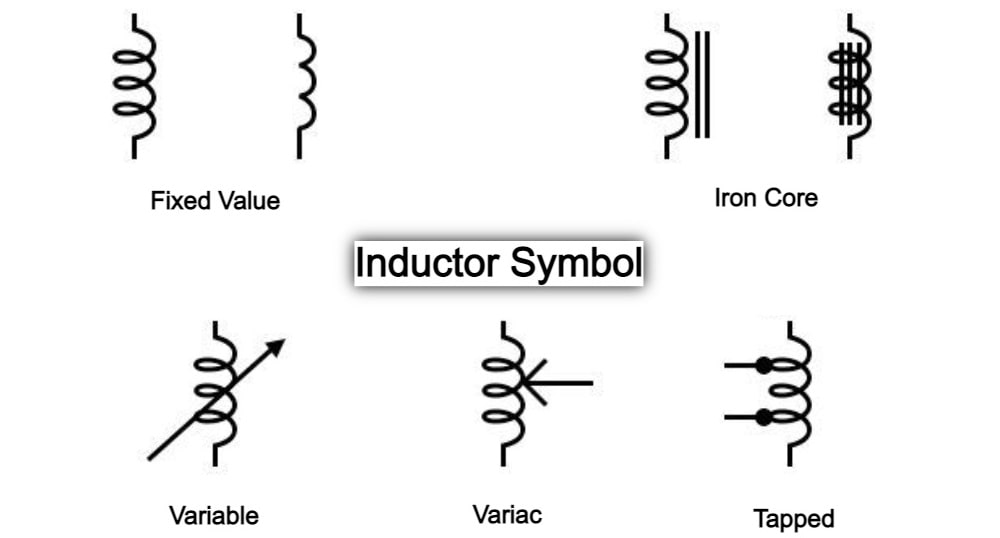
Different Types of Inductor
Inductors are basically of two types-
A) Fixed Inductor
A fixed inductor is a type of inductor which always has the same inductance. Air-core, iron-core and ferrite-core are some examples of fixed inductors.
1. Air-Core Inductor: ( Types of Inductor )
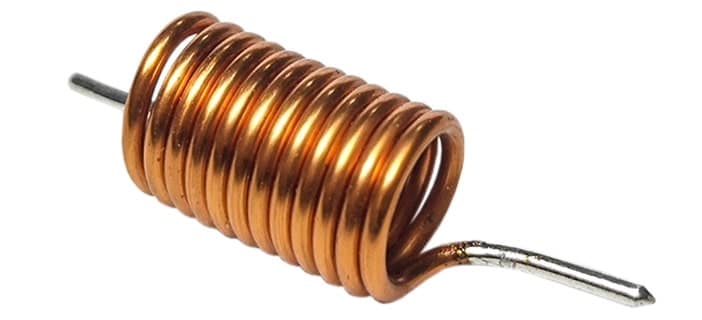
It is that inductor in which a coil of wire wound on a hollow former made of ordinary cardboard. Since there is nothing but air inside of the coil so it is known as air-core inductor. It has least inductance for a given number of turns and core length. These types of inductors use non-magnetic materials in the core, for example plastic and ceramic .The air core inductors offer minimum signal loss in their respective applications consisting of very high magnetic field strength. Due to unavailability of solid core material, there exist no core losses. In radio-frequency applications where very low inductance is required, air-core inductors are used.
2. Iron-Core Inductor: ( Types of Inductor )
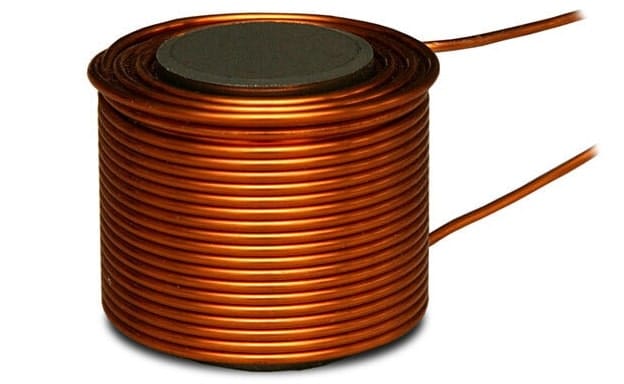
It is that inductor in which a coil of wire is wound over a solid or laminated iron core. Putting iron as a core inside an inductor increases its inductance. Iron is the most familiar magnetic material for using as inductors. These take the form of iron-core inductors. They are generally used for the applications in low frequency line filtering, since they are beefy and have large inductances.
Such core materials, on account of their high magnetic permeability, help in the increment of inductance. Permeability is a property which is a measurement of any material’s potential of aiding the creation of magnetic fields within the materials. Inductors which are made up of ferromagnetic core materials, suffer from core losses and energy losses and energy losses at high frequencies. In order to avoid hysteresis and eddy-current losses; iron core is laminated i.e. it is formed by thin iron laminations pressed together. However they remain insulated from each other. It is also called a choke. It is used in low frequency applications such as filter circuits, power supplies etc.
3. Ferrite-Core Inductor: ( Types of Inductor )
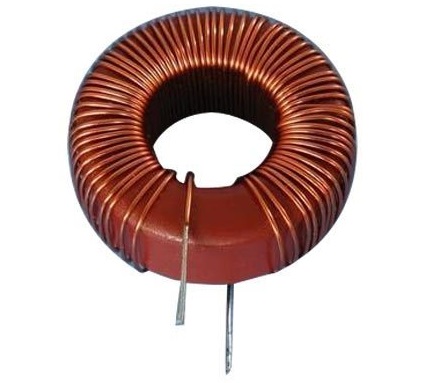
In this inductor coil of wire is wound on a solid core made of highly ferromagnetic substance called ferrite. Ferrite is basically a hard substance, which is made up of fine particles of iron powder embedded in an insulating binder. There occur minimum eddy current losses in ferrite core. Iron-core inductors are not suitable for high frequency applications; this difficulty is overcome by the use of ferrite-core. The values of such inductors are in the range of few micros Henry to few mili Henry. It is used in RF chokes, regulated type DC power supplies and in communications equipment.
B) Variable Inductor
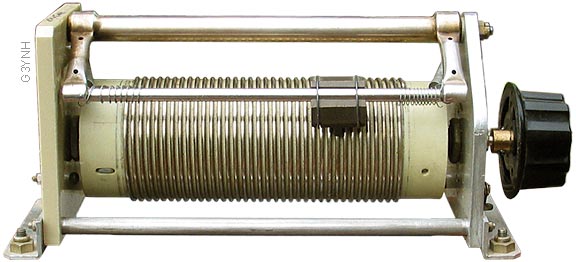
Inductance of a variable inductor is varied by increasing or decreasing the number of turns through movable contract on top of the windings. These inductors use such conductors in there windings which have no insulation .Hence when the contact on top of the turn is moved, the number of effective turns will change. The number of turns is directly proportional to the winding. The inductance varies with the number of turns.
The disadvantage of such method is that the contacts short more than one turn will increases the loss in the winding. This problem can be solved by increasing the space between each turn. Also, a grove wheel as a contact can also be used. The inductors using such method are known as roller inductor. In some uses such as tuned circuits, it becomes necessary to change the inductance from zero to a maximum value. One of the best uses of ferrite core inductors is for this use only. In these type of inductors, a coil is wound on a hollow former, which can be screwed in or out of the former. The value of inductance changes with the position of the ferrite core.
Applications of Inductor
- The main function of an inductor in a circuit is to block AC signal but to pass DC signal (or voltage).
- Used in power supply circuits.
- When inductors are used with a capacitor in either series or parallel combination, they help get rid of unwanted signals.
- Used in filter circuit.
- Used in oscillator circuits.
- The variable inductors used in tuning circuits for radio frequencies.
- Inductors are also used for changing the resonance frequency.
- Inductors are also used for impedance matching.
- Wireless communications applications.
